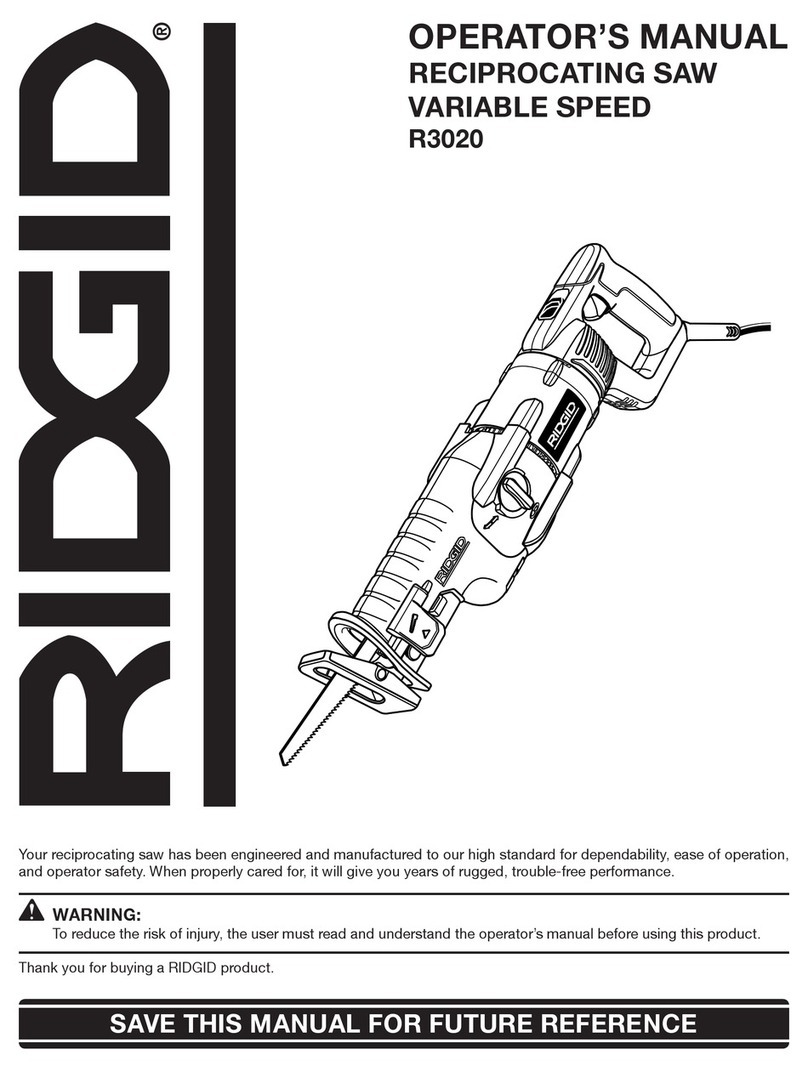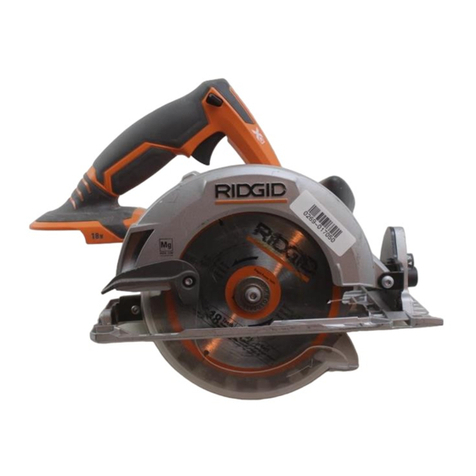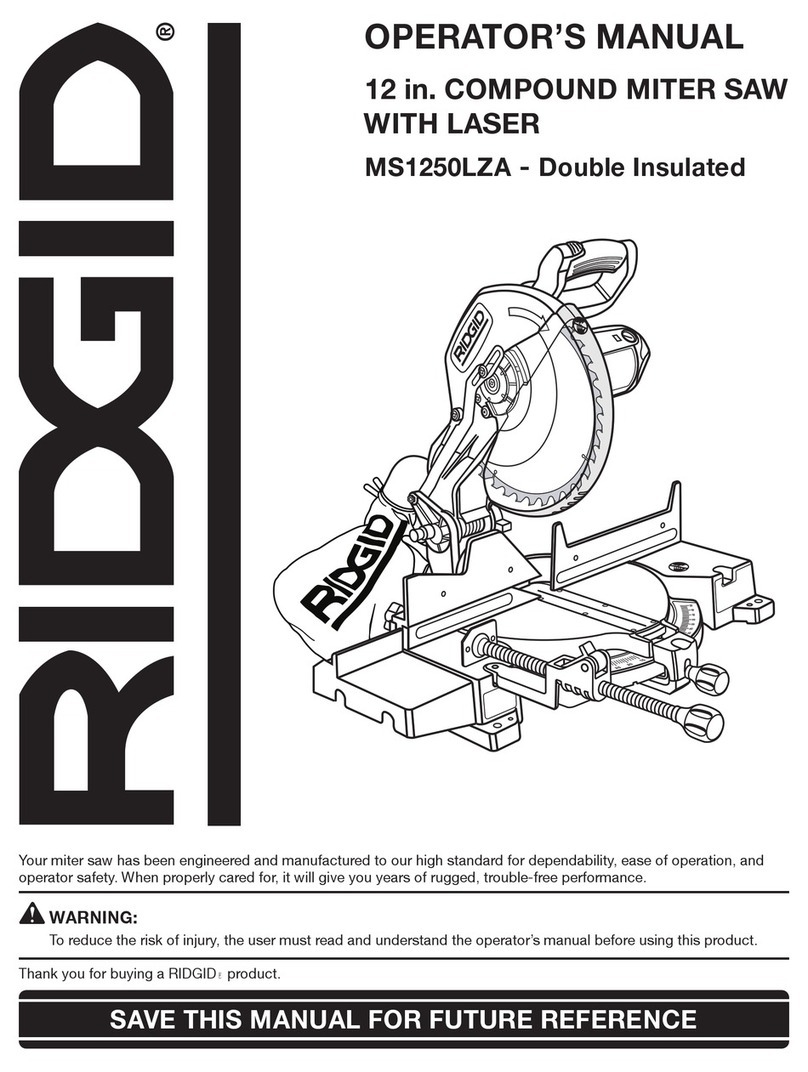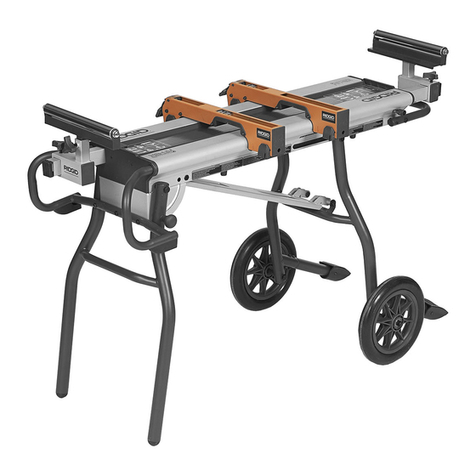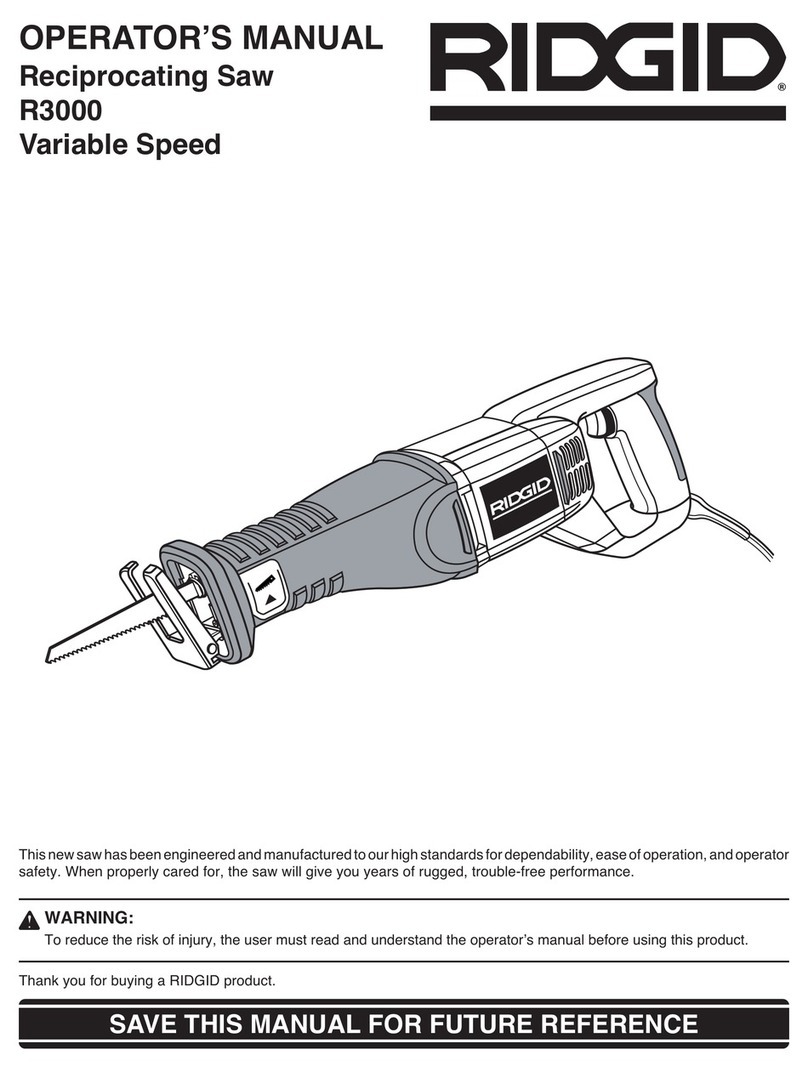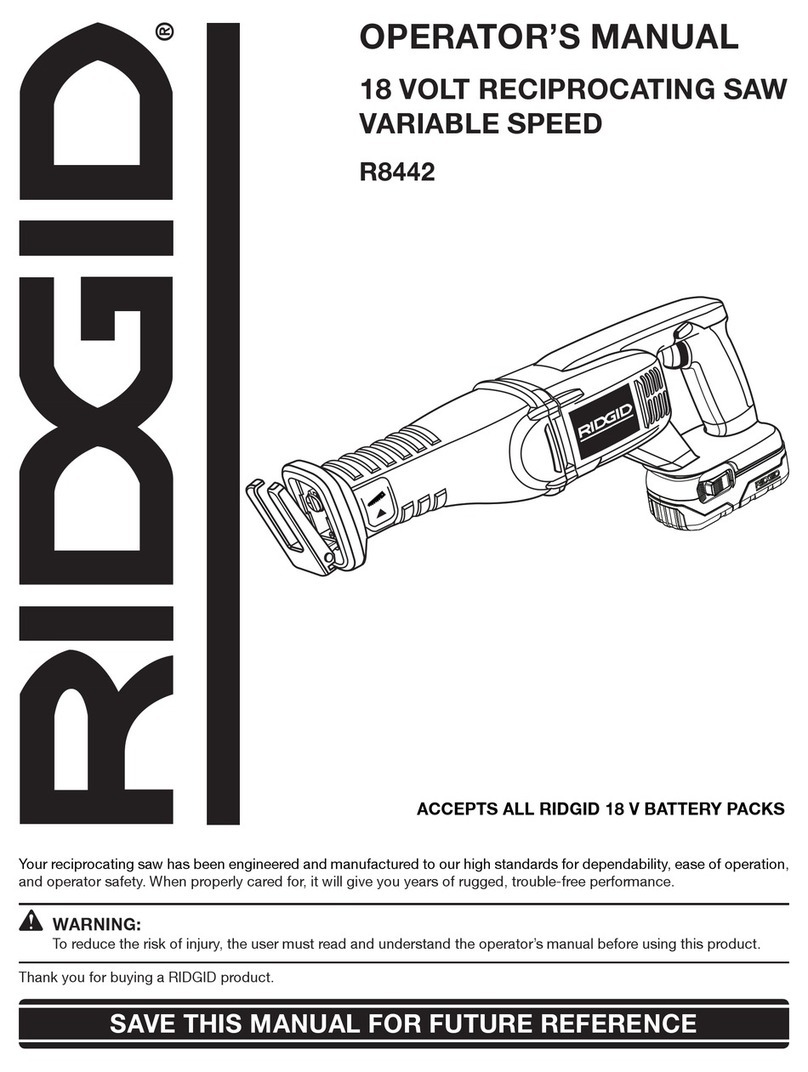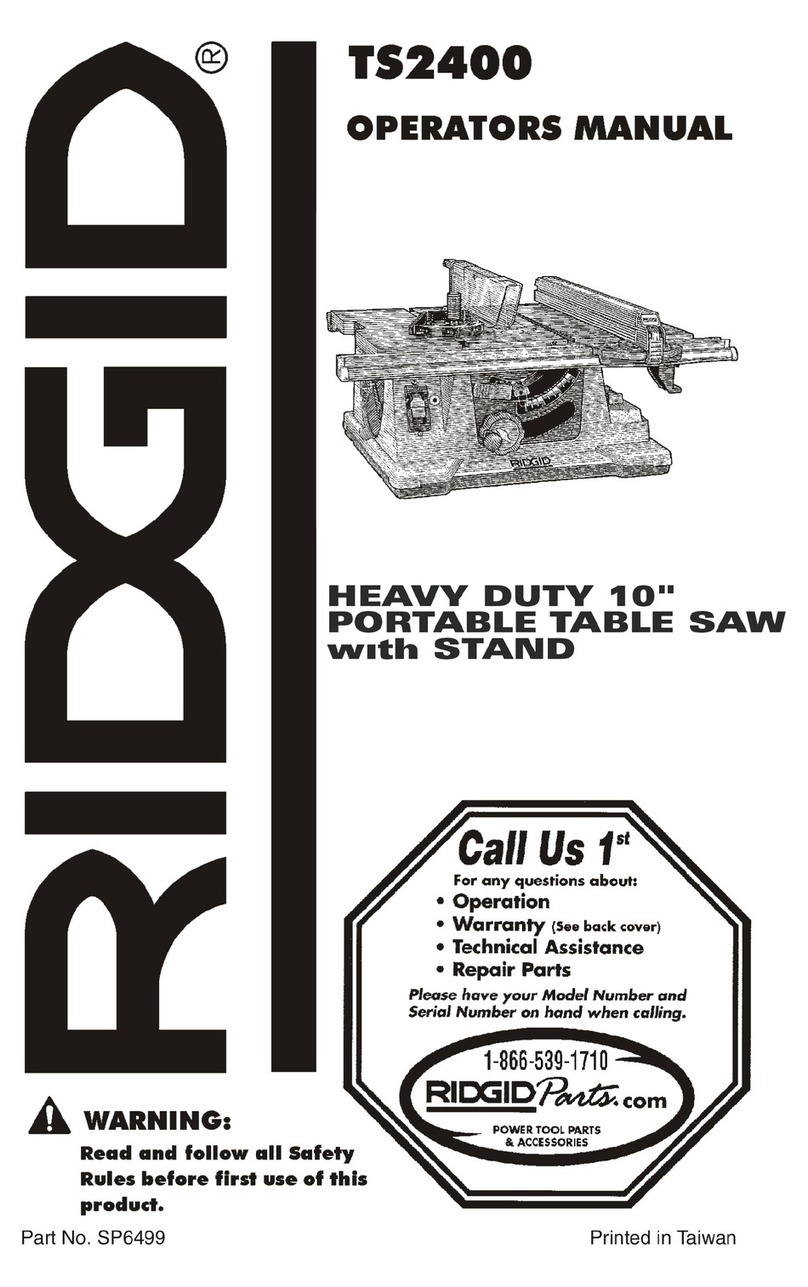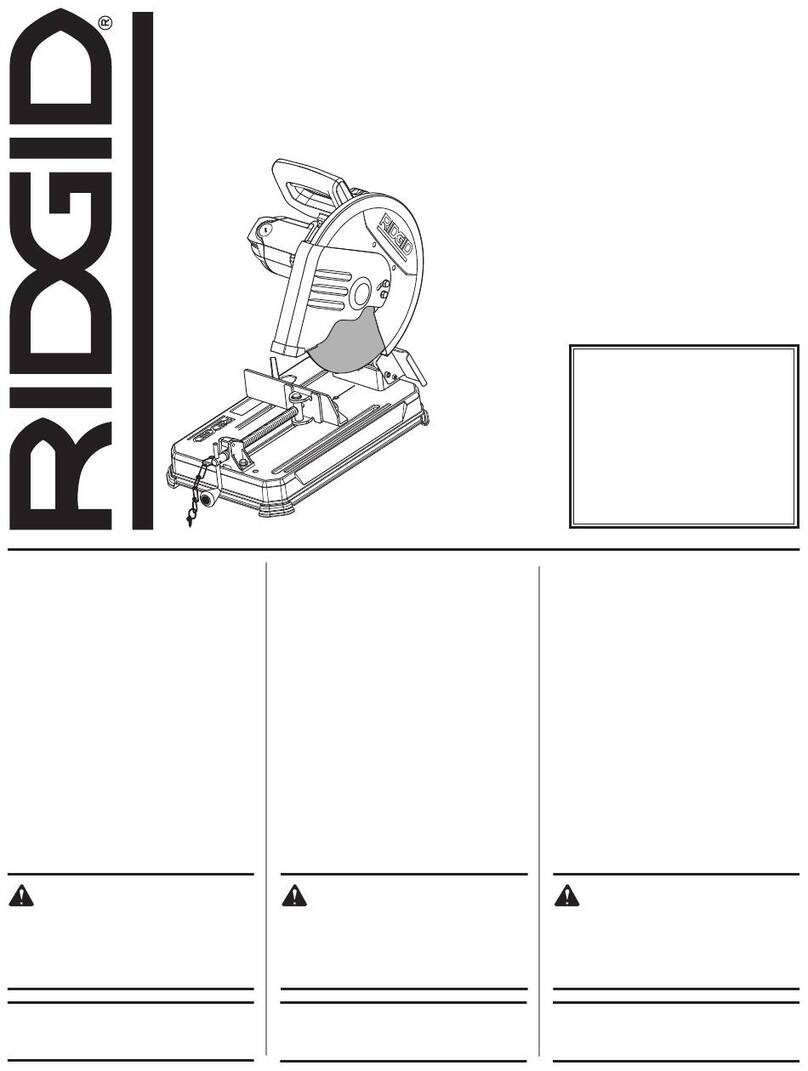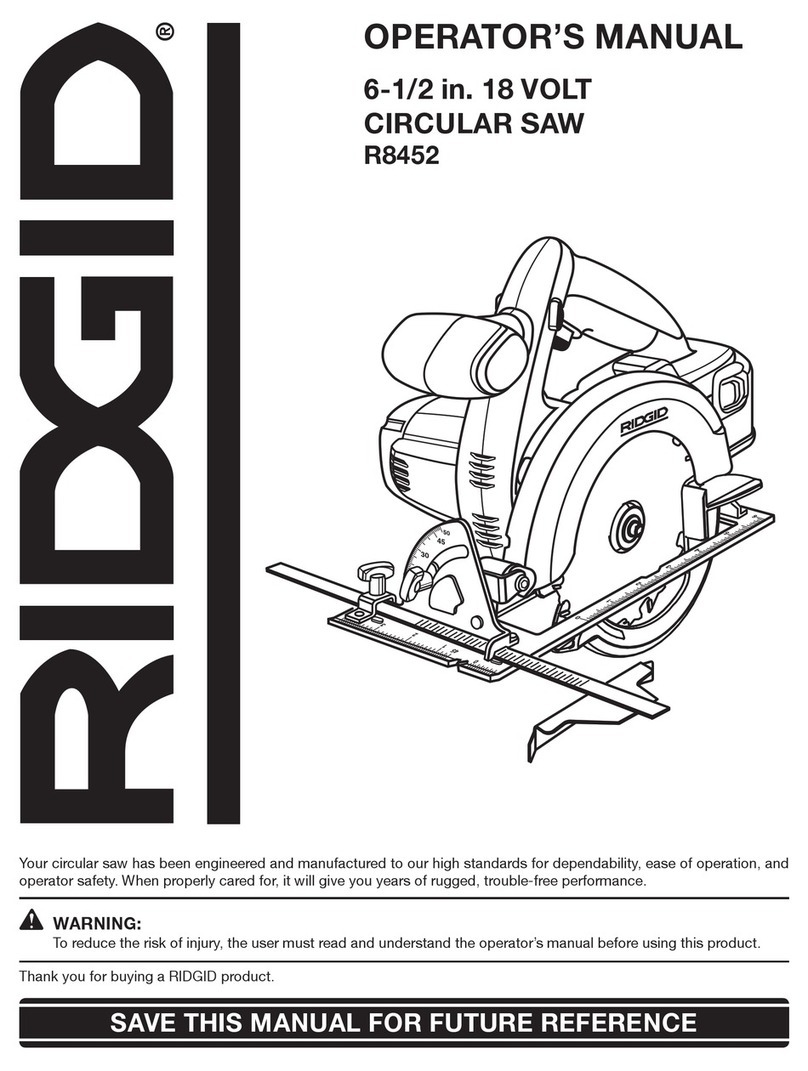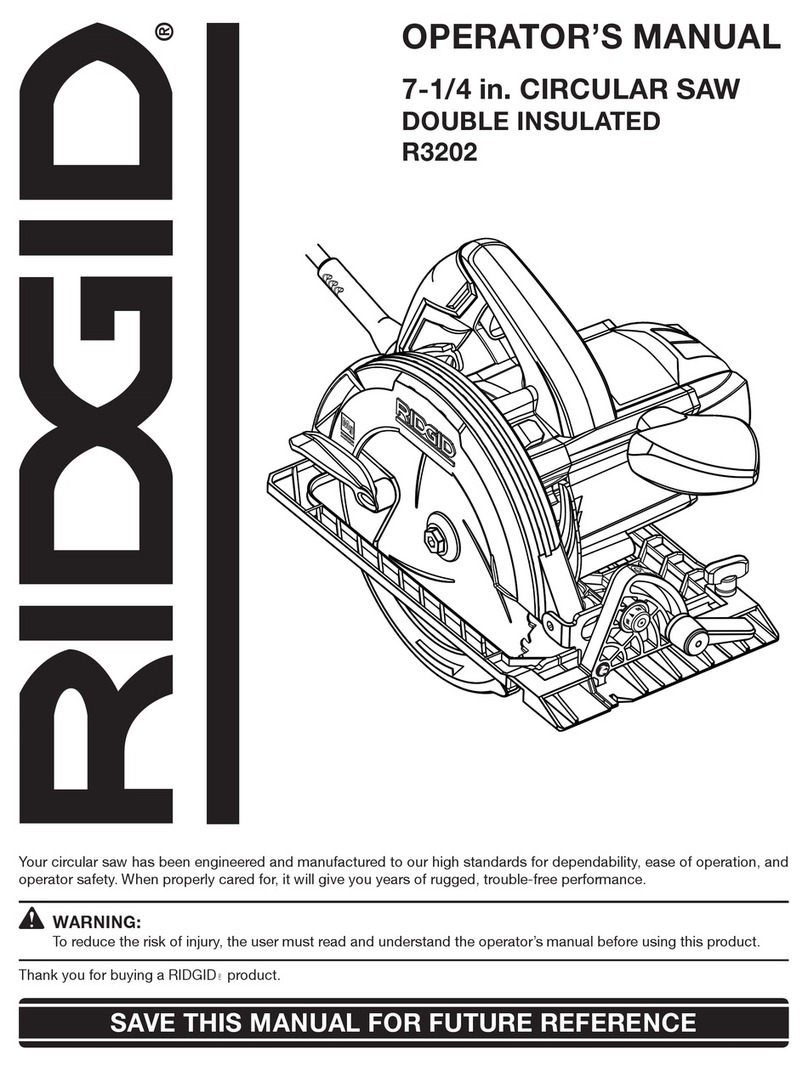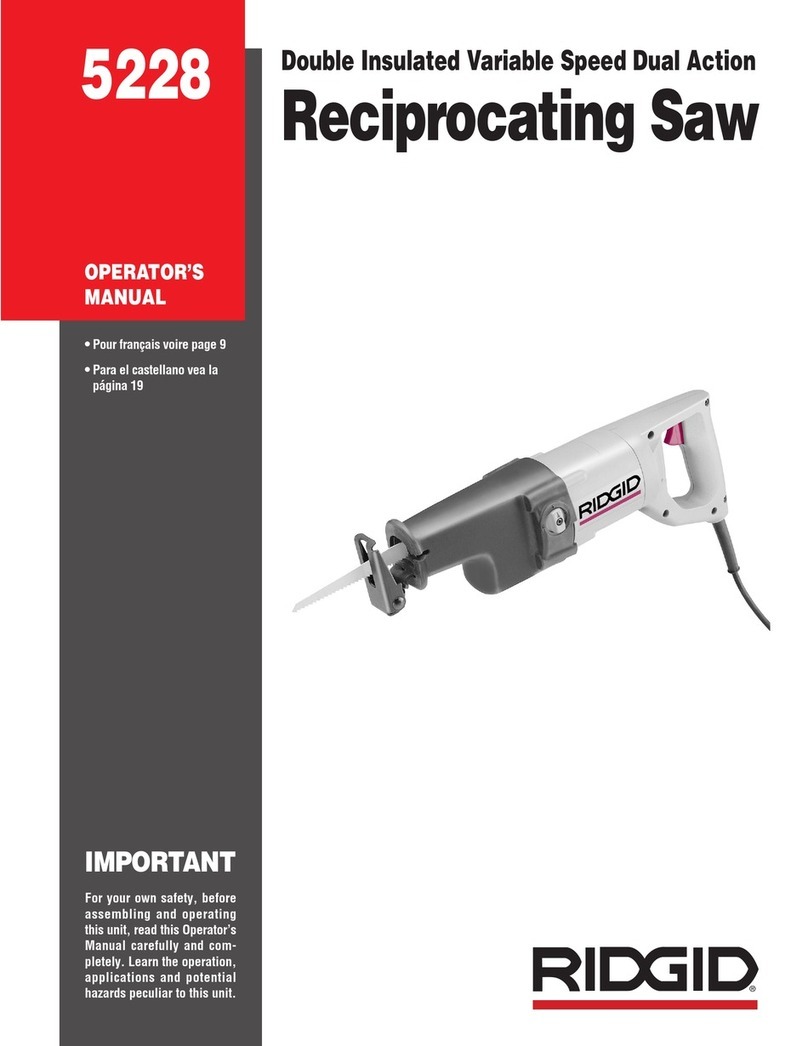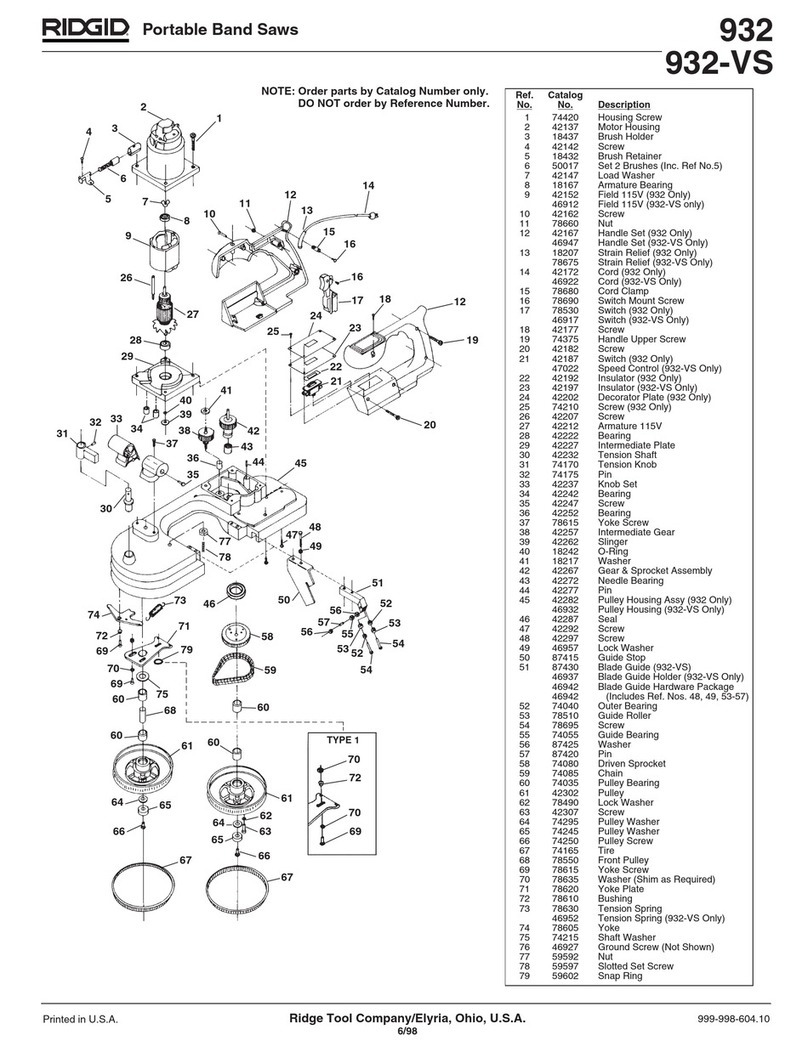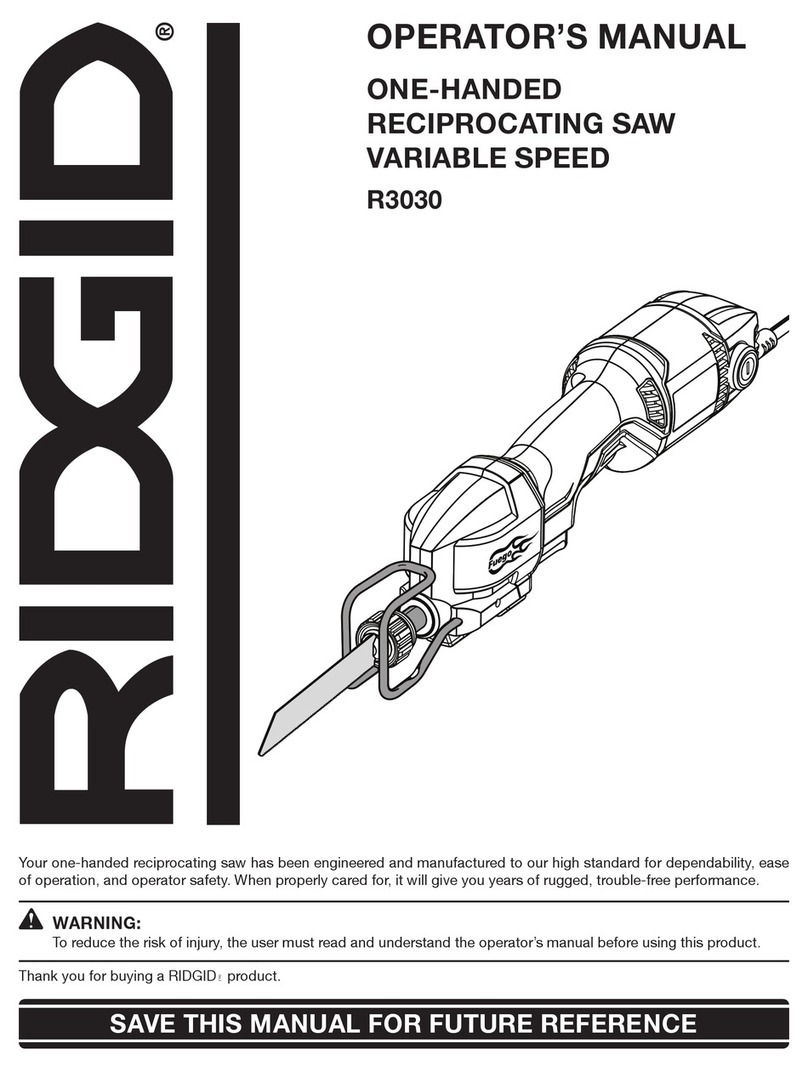Ridge Tool Company 3
CM1450 14″Abrasive Cut-Off Machine
Some dust created by power sanding,
sawing, grinding, drilling and other construction activi-
ties contains chemicals known to the State of California to
cause cancer, birth defects or other reproductive harm.
Some examples of these chemicals are:
•lead from lead-based paints
•crystalline silica from bricks and cement and other
masonry products
•arsenic and chromium from chemically-treated lumber
Your risk from these exposures varies, depending on
how often you do this type of work. To reduce your expo-
sure to these chemicals: work in a well ventilated area and
work with approved safety equipment such as those dust
masks that are specially designed to filter out micro-
scopic particles.
•Never stand on tool or its stand. Serious injury could
occur if the tool is tipped or if the cutting tool is acci-
dentally contacted. Do not store materials on or near the
tool such that it is necessary to stand on the tool or its
stand to reach them.
•Keep guards in place, in working order, and in proper
adjustment and alignment.
Tool Use and Care
•Use clamps or other practical way to secure and
support the workpiece to a stable platform. Holding
the workpiece by hand is unstable and may lead to
loss of control.
•Do not force tool. Use the correct tool for your ap-
plication. The correct tool will do the job better and
safer at the rate for which it is designed.
•Do not use if switch does not turn it ON or OFF.
Any tool that cannot be controlled with the switch is
dangerous and must be repaired.
•Disconnect the plug from the power source before
making any adjustments, changing accessories or
storing the tool. Such preventive safety measures
reduce the risk of starting the tool accidentally.
•Store idle tools out of the reach of children and
other untrained persons. Tools are dangerous in
the hands of untrained users.
•Never leave tool running unattended. Turn power
OFF. Do not leave tool until it comes to a complete
stop.
•Check for misalignment or binding of moving
parts, breakage of parts and any other condition
that may affect the tool’s operation. If damaged,
have the tool serviced before using. Many accidents
are caused by poorly maintained tools.
•Use only accessories that are recommended by
the manufacturer for your model. Accessories that
may be suitable for one tool may become hazardous
when used on another tool.
•Inspect tool and extension cords periodically and
replace if damaged. Damaged cords increase the
risk of electrical shock.
•Keep handles dry and clean; free from oil and
grease. Allows for better control of the tool.
Service
•Tool service must be performed only by qualified
repair personnel. Service or maintenance performed
by unqualified repair personnel could result in injury.
•When servicing a tool, use only identical replace-
ment parts. Follow instructions in the Maintenance
Section of this manual. Use of unauthorized parts or
failure to follow maintenance instructions may create a
risk of electrical shock or injury.
Specific Safety Information
WARNING
Read this operator’s manual carefully before using
the CM1450. Failure to understand and follow the
contents of this manual may result in electrical
shock, fire and/or serious personal injury.
Call the Ridge Tool Company, Technical Service Depart-
ment at (800) 519-3456 if you have any questions.
Machine Safety
•Wear proper apparel while using an abrasive cut-
off machine. Safety goggles or safety glasses with
side shields that are in compliance with ANSI or CSA
standards, dusk mask, ear protection, leather gloves
and a shop apron capable of stopping small wheel or
workpiece fragments.
•Only use a 14 inch abrasive wheel rated for use at
3900 RPM. Do not use larger wheels or worn down
damaged wheels from larger cut off machines.
Wheels running over their rated speed can fly apart
and possibly striking you or a bystander. Wheels
intended for larger tools are not suitable for the higher
speed of the smaller tool.
•Keep hands away from the cutting area and the
wheel. Never place your hand behind the wheel. Do
not attempt to remove or clamp material when
the wheel is moving. Contact with the spinning wheel
may cause serious injury.
WARNING



